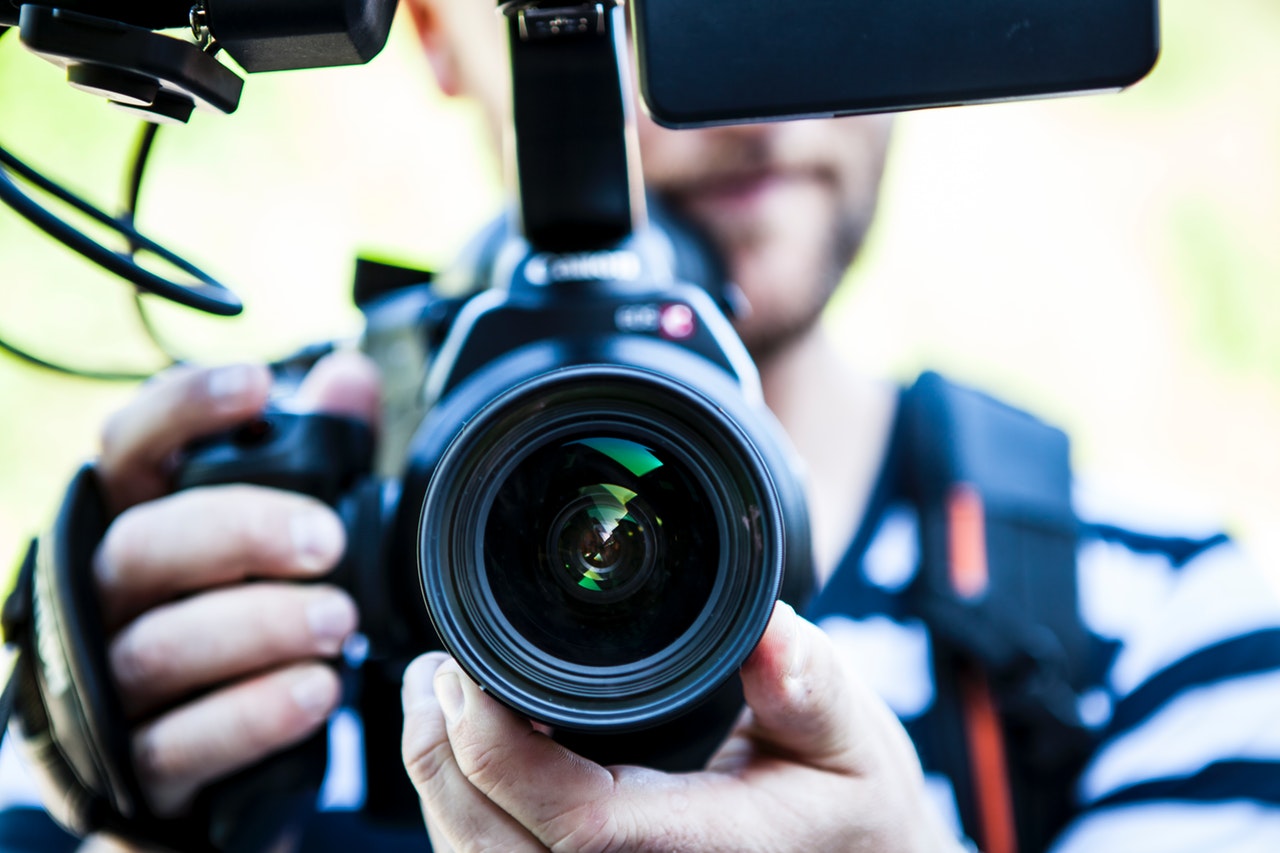By Bob Turel, DTM
Because the International Speech contest rules have changed and require that the district submit a video of the winner’s speech, your preparation needs to be more encompassing. Competing for a spot at the district level does not require any video recording at all, but now one is required for the Regional Quarter Finals. With this in mind, now is the time to plan how you will incorporate video into your speech presentations.
I suggest you begin to use video recordings for your presentations at the club level as soon as possible. Set up your phone/camera or video camera at home for your rehearsals, so you begin to acclimate yourself to speak toward, and being in the camera lens. Video adds a dimension of impact to your speech. It captures and magnifies your personality traits for all to see.
Like anything else that may have been new to your speaking experience, it takes practice. Use it for at-home rehearsals, in your club presentations, and for guest speaker opportunities you may have. Once you view a few video files of your speeches, you’ll see where the development opportunities are and then you can begin to work on them. Don’t limit feedback to your own perspective. Share your video file with fellow TMs and non-TM friends to get a broader perspective.
Change your mindset
This entire process of using videos for presentations begins with a mindset change. Most of us began our Toastmasters journey to simply develop our skills before a live audience. There was at least one legacy project manual that gave us opportunities to speak on TV. Although a progressive manual, for sure, not that many TMs embarked along the video trail. Over the years, we’ve seen technological advancements in smartphones include video apps (computer programs.) These apps are usually free and fairly easy to use. The process is basically shooting the video, store the video file, and make it accessible to those you would like feedback from.
Technically, when you shoot a video, you need to ensure the room lighting is bright and on you. You have to place the camera far enough away from you, so your entire body is in the shot. And you need to test that the audio level of your video app is picking up your voice completely, and with all vocal variety nuances. A typical 5 to 7-minute speech will create a rather large file (more than a Gigabyte!) so you need to have storage space to accommodate a file that size. Once the file is stored (Ex. Dropbox, One Drive, YouTube, etc.) it can be accessed and downloaded by others onto their computers. Large files can take several minutes to download. Depending on what type of computer operating system is downloading your file (Windows or Apple,) a free video player may be available to open the file for viewing. Mobile devices can download and open the file as well as laptops and personal computers. This entire process can seem daunting, yet, it also can open up new pathways for you to develop your communications skills.
If you are planning on entering the International Speech contest, begin this video planning as part of your speech development. Just as you may seek fellow TMs’ opinions on your speech, likewise, build a speech contest team that will help you with video setup, as well as feedback. Every world champion has thanked his or her team of supporters to get to the big stage. Set your sights on the big stage and remember to include your silent camera as part of your audience.
One of the techniques I’ve learned from professionals in the television industry is to include the camera as a member of the audience. Avoid looking at it exclusively, yet, when you speak toward it, treat it as if there were people behind the lens. The reminder again is the more you practice with video, the more comfortable you’ll be with it. There are varying points of view on the use of video, and like all other feedback, you choose which perspective works for you.
Here is a perspective from 2005 World Champion of Public Speaking Lance Miller, DTM,
“The new rules of a Video Quarter Final in the International Speech Contest have added some complexity, not to mention, uncertainty, to the both the judging and qualifying process. I have received several
questions from the speakers that ask me to coach them on how they should work with video aspect of the competition. Here is what I recommend.
1. You are speaking to the audience in the room. So, speak to the audience, connect with the audience, impact the audience. The video should capture your connection with the audience.
2. Do not speak to the camera as that creates a disconnection with audience, which lessens your impact with the audience.
3. To give the camera the best opportunities to capture the real “you” it is important to speak to the entire room, shifting your focus to the front, middle and back of the room When we speak to the back of the room, our head and focus is the highest and in the best alignment with the camera.
The true value of our speech is not a trophy, a ribbon or a title, but how long our message resonates in the hearts and minds of the audience.”
Here is a different viewpoint from 2001 World Champion of Public Speaking Darren La Croix
“We must look at the camera as an important person in the audience we are talking to. It must be included, and we need to get comfortable with it. Many people sitting right in front [International Speech contest at World Convention] are watching the big screens instead of the live person. Weird, but true. Looking into the camera allows us to connect with them. Beside it is great training for the real world which is why we should be competing anyway! Helping people while stretching ourselves.”
Practice makes progress
As a Toastmaster who has been exhorting fellow TMs to video their speeches for remote feedback, I’m a fan of video usage on a regular basis. I look at it the same way I did when thinking about how nervous I was to first get up to speak in front of an audience. Practice makes progress! If you recognize the overwhelming benefits, it helps you work with any anxiety that is present. Transitioning to Pathways is the dawning of a new era in Toastmasters. Audio-Visual presentations are part of our culture, so embrace the idea and maximize your optics as the next world champion of public speaking.

